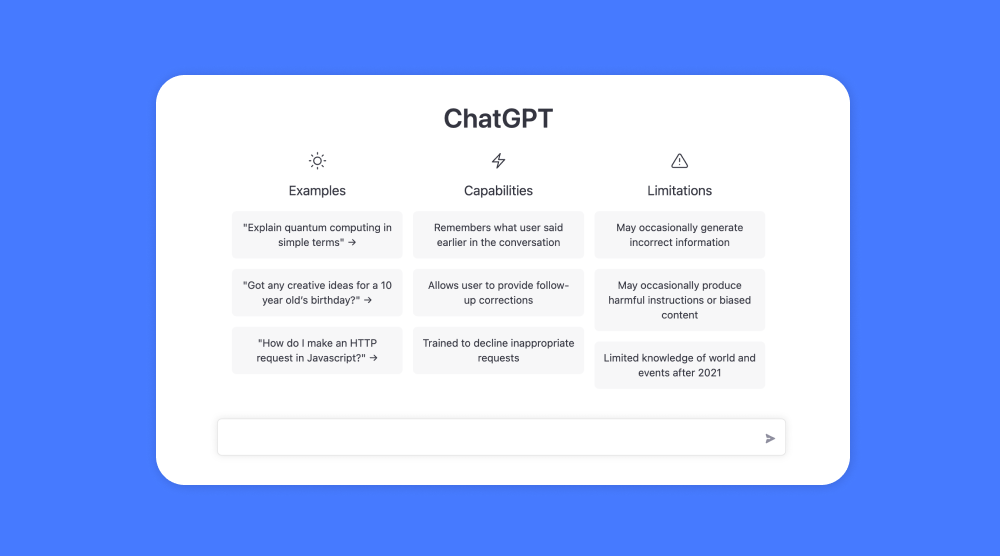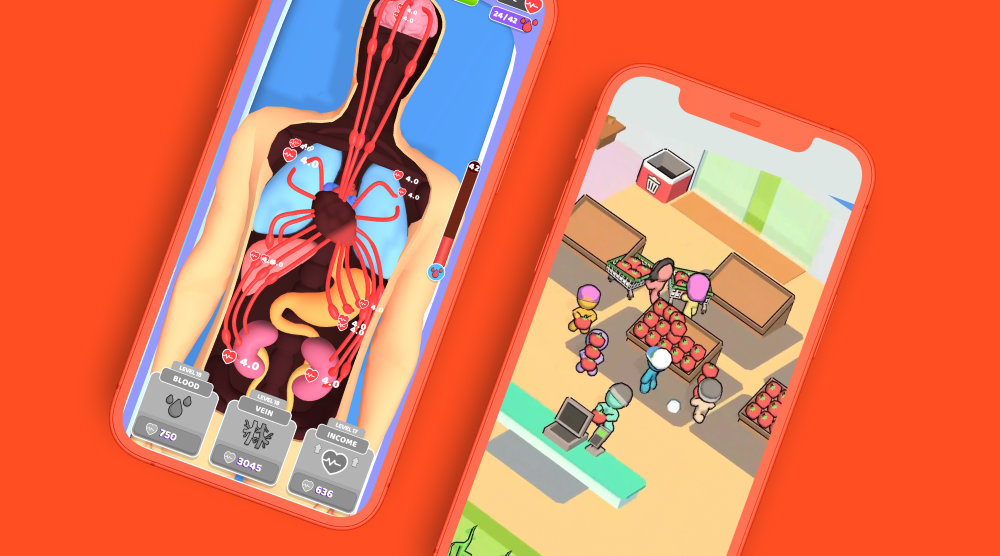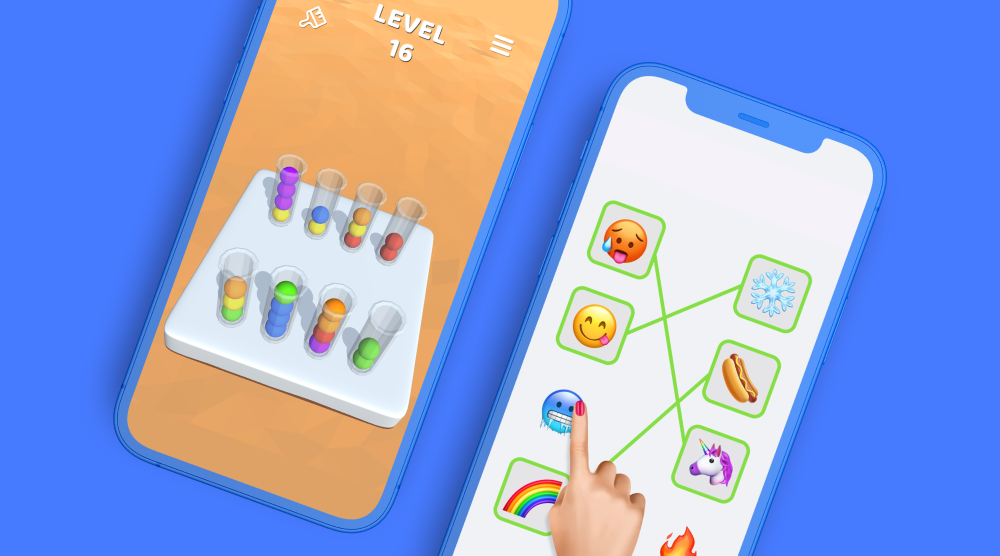Speed is the name of the game in hyper-casual development - the faster you can ideate, design, and launch a game, the better your chances of beating out competitors and scaling to the top of the charts. That’s where Open AI and other AI-based programs come in. Technologies like Chat GPT and Dall-E are soon to become hugely important tools in a developer’s toolbox for generating a wide range of possibilities, from a list of mechanics to try out to generating lines of dialogue that include a decision-making aspect.
Here, Danielle Cohen Reich, VP Gaming at Supersonic, discusses four ways to use Open AI programs to help you launch a successful hyper-casual game more quickly and easily. Using this technology not only gives you an endless resource for speeding up all parts of the publishing process, but also lets you spend less time on the day-to-day development tasks and more time on the higher-level, creative parts of your operation that make a bigger impact on your success.
1. Get ideas for themes and mechanics
Using Chat GPT, you can generate new ideas for games by feeding it basic information about your game - like the general theme.
For example, if you want to build a hyper-casual game inspired by a retro theme, you can feed this information into Chat GPT and it’ll hone the theme (inspired by Tetris), give you an idea for a mechanic (falling blocks), and even suggest add-ons players may love (power-ups and boosters). Using this as a starting point, you can create a prototype quickly and easily - and then return to Chat GPT for iterations and more new ideas.
2. Create content for your levels
You can also use Open AI platforms to generate dialogue and narratives for your hyper-casual game. Particularly for simulation decision-making games that require more content than most other genres, this function can significantly improve your efficiency and development speed. In ChatGPT, for example, you can input information about your game's characters and their personalities - then let the model generate realistic and engaging dialogue, like in the example here.
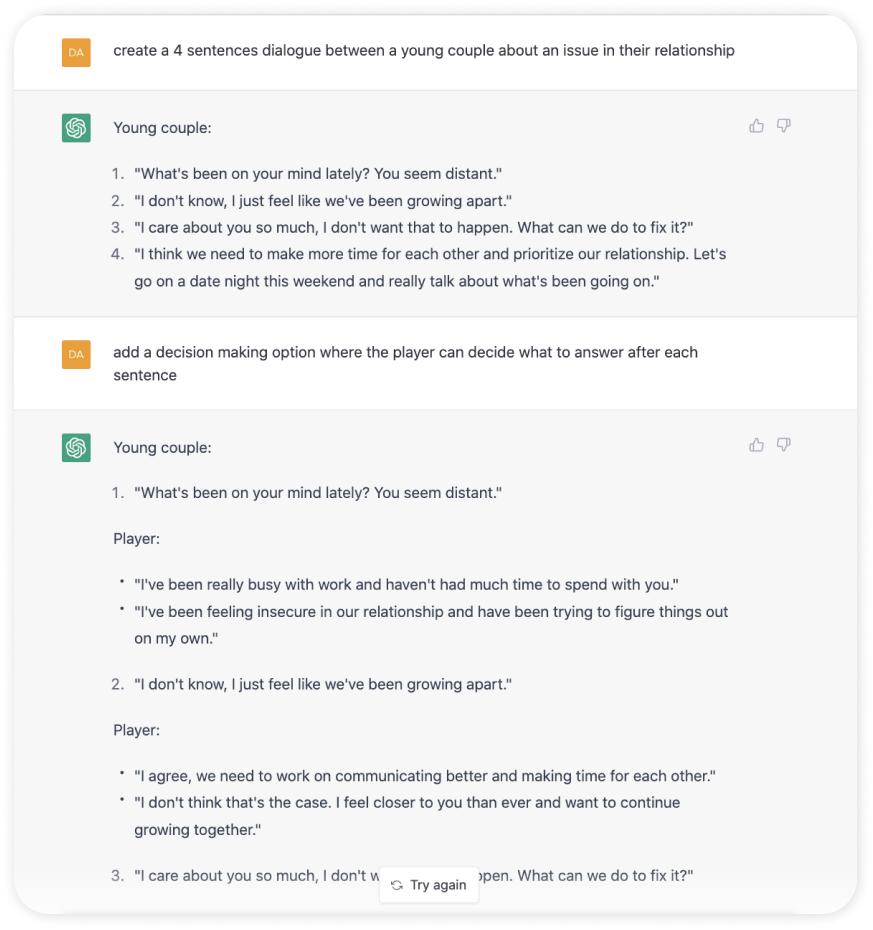
You can apply this concept to come up with new level content, too - like suggestions for different environments based on your game’s mechanic, theme, etc.
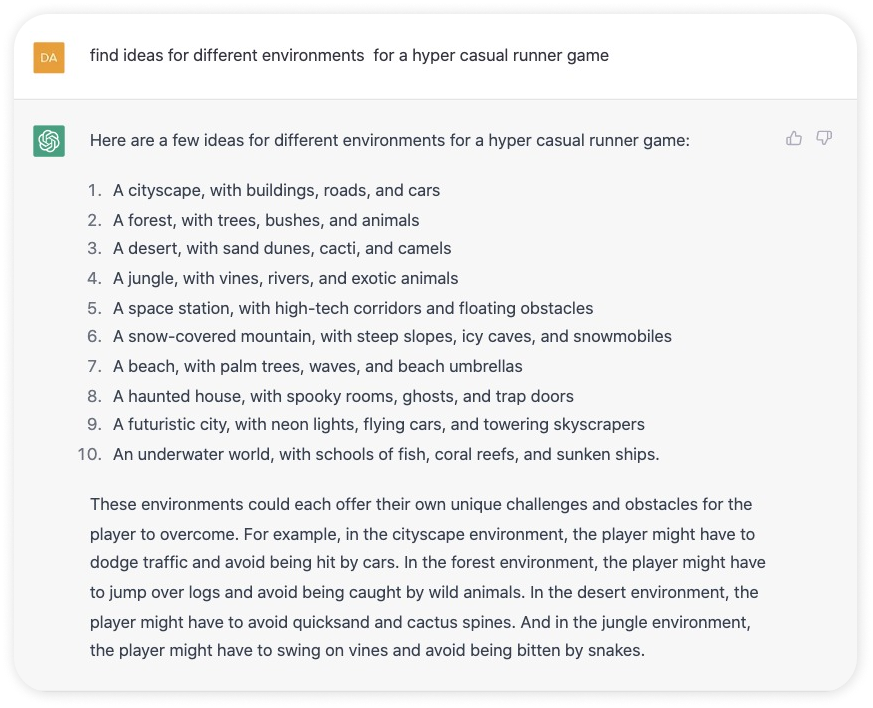
3. Solve complex code and math problems
You can’t use Open AI to build game levels for you (yet), but it can solve math and code-related problems in Unity and C-Sharp for you. For example, if you’re working on a game in Unity and encounter a complex math problem like calculating the volume of a cube or the average of a huge set of numbers, you can input some information into ChatGPT about the problem and the game's requirements. Then the model can generate possible solutions in code that you can copy and paste into Unity.
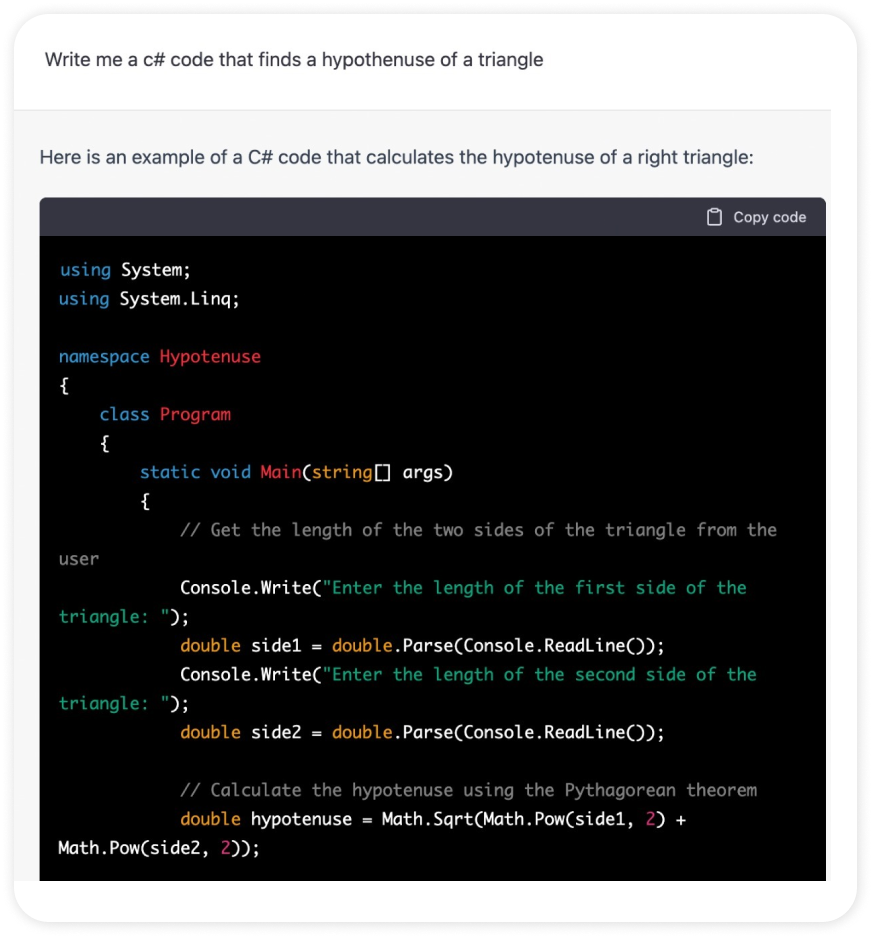
Basically, any mathematical problem in your levels can be solved by these programs, preventing you from getting bogged down in complex math and code issues. As a result, you save valuable time and effort - and you can create even more complex and engaging games.
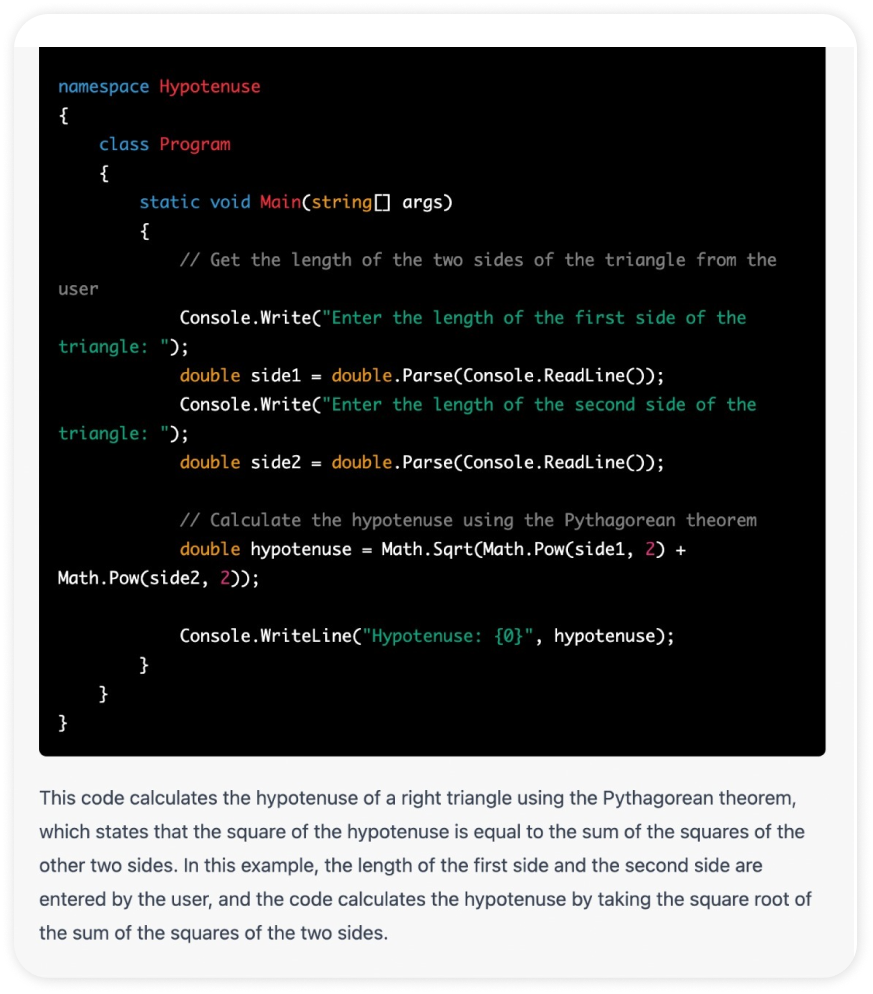
4. Design a high-quality icon for the app stores
Midjourney is another AI tool that’s especially useful for game asset and icon creation. Design custom game assets and icons that fit the unique style and aesthetic of your game by inputting a simple, text-based request. To streamline our own design process, we used Midjourney to create an icon for our game Circle The Fish by including a screenshot from the game itself and including the phrases, “illustration, illustrator, bright colors, 2D, flat”. This was the result:
![]()
Plus, the platform offers a wide range of pre-made templates and designs, as well as the ability to import and edit existing artwork. This makes it easier than ever to create professional-looking assets and put more resources towards other parts of your UA instead.
Best practices for using AI tools
Putting the right inputs and information into the AI programs mentioned above is the key to getting the most valuable and relevant results to help ideate and design your game. To help you figure out the best ways to use these tools and conduct queries, you can turn to TikTok - that’s right, we said TikTok.
@benparr AI is going to radically change everything rapidly and we aren’t ready for it, Part 2: Creative Writing, Novels & Film #ai #movies #tv #film #novels #news #chatgpt ♬ original sound - Ben Parr - The Social Analyst
Videos like this one show how users are searching on the AI platforms and what kind of phrases may yield the most helpful results.
Similar videos are available for all the major AI tools, like this one describing the best practices on Midjourney:
@adequateenthusiasm How to use Midjourney pt 1. #midjourney #dndtiktok #dndtok #dungeonsanddragons #dnd #dnd5e #ttrpg #tarot #5e ♬ original sound - AdequateEnthusiasm
Follow hashtags such as #midjourney and #chatgpt to get clued into best practices and learn to navigate these platforms in an efficient way.
With AI already transforming ideation and design, we’re excited to see the future innovations that could make hyper-casual development even more quick and easy. What are your predictions? Let us know on LinkedIn.
Let's put these tips to good use
Publish your game with Supersonic
